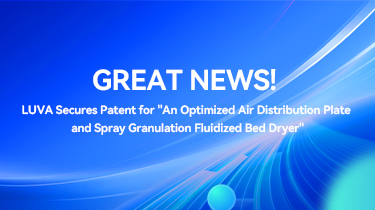From November 1 to 3, 2023, Enrique, the Project Coordinator from Mexican company RL, visited LUVA for a three-day technical exchange and business discussions on natural gas urea production. Kevin Yuan, Chairman and CEO of LUVA, participated in the reception meeting and engaged in discussions on topics such as natural gas urea technology, automotive urea applications, the Mexican urea market, and more.

RL is a Mexican company with 40 years of manufacturing experience in the fields of automotive and industrial lubricants, grease, antifreeze, brake fluid, and additives. It ranks among the top 100 companies in Mexico, with a market share of 43% in the light vehicle industry and 80% in the heavy-duty vehicle industry. Additionally, the company is the first in Mexico to produce automotive urea and currently holds a 50% market share in the local market.

Mexico is an important importer of fertilizers, with approximately 65% of its fertilizer supply relying on imports. The current international situation is complex, with tight supply and demand dynamics for global fertilizers like ammonia, urea, and other nitrogen-based fertilizers, leading to price fluctuations. According to data from the Mexican National Customs Authority, in 2022, due to rising international prices, Mexico’s total fertilizer imports surged by 75%, reaching $2.5 billion, marking the highest level ever recorded.

Urea is considered the “staple” of food production and serves as a barometer for fertilizer prices. The instability of urea prices not only impacts food security but also has the potential to affect certain agricultural industry chains that rely on fertilizer production. This can influence their profitability, including sectors like transportation and crop harvesting. Simultaneously, as early as 2018, the Mexican Secretariat of Environment and Natural Resources (SEMARNAT) introduced new emissions standards for heavy-duty vehicles. These standards required heavy-duty diesel vehicles sold after January 1, 2018, to comply with EPA 2010 and Euro IV standards. Vehicles meeting these standards needed to be equipped with diesel particulate filters (DPF), advanced nitrogen oxide treatment technology, on-board diagnostics (OBD) systems, and failure protection systems to ensure the proper operation of vehicle emission control systems.

To comply with Euro IV to Euro VI emissions regulations, major Mexican and European heavy-duty commercial vehicle and diesel engine companies primarily employ the “Optimized Combustion + SCR ” technology route, commonly known as the SCR route. This route involves optimizing fuel injection and combustion processes to minimize the production of PM within the engine. Subsequently, in the post-treatment process outside the engine, a urea solution is used for the selective catalytic reduction of NOx. This approach is widely adopted for long-haul freight trucks in European and North American countries.

As the first Mexican company to produce automotive urea, RL possesses a deep understanding of this field. Automotive urea, as an essential component of SCR automotive exhaust after-treatment technology, plays a pivotal role in achieving energy savings and emissions reduction in vehicles, contributing to environmental protection. With the increasing demand for such products, finding affordable and reliable automotive urea has become increasingly important. In order to ensure a stable supply of automotive urea domestically and in countries like Europe and the United States, RL plans to launch a 100,000 TPA gas urea production project.

LUVA has mastered the production technologies of synthetic ammonia, methanol, and urea using natural gas, coke oven gas, and coal as feedstocks. We are actively involved in various aspects, whether it’s the construction of new projects, revamping existing plants to increase capacity or reduce energy consumption, or relocating and rebuilding projects. During the meeting, both parties engaged in detailed discussions on project requirements, process technologies, project execution, and established clear plans for the subsequent initiation.




